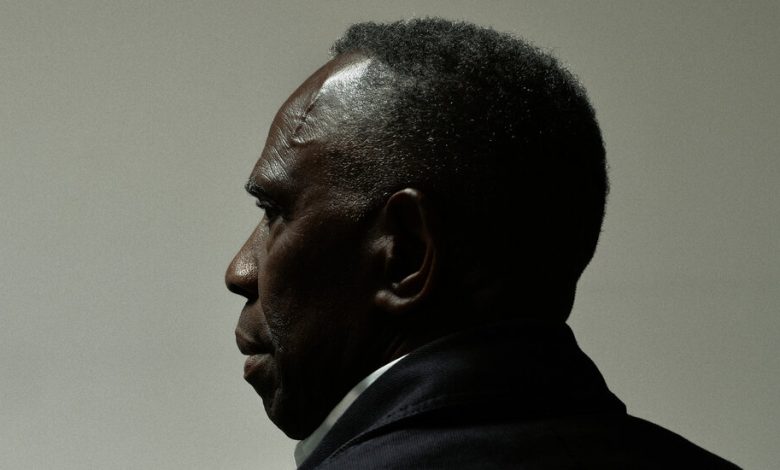Charles Gaines, By the Numbers

The conceptual artist Charles Gaines, best known for his rules-based grid works that he began making in the 1970s, had his imagination shaped by his experiences of difference. Born in Charleston, S.C., in 1944, a full decade before the Supreme Court’s Brown v. Board of Education decision that desegregated public schools in law if not in life, he realized, he says, that “there was a whole cultural and social order based upon differences between white and Black people.” So many of the adults around him seemed to accept Jim Crow segregation as immutable. “At the time, I didn’t know how a whole set of cultural values could expand out of the idea of that difference,” he says. “Even as a kid it seemed arbitrary to me.”
Soon after moving with his parents to Newark, N.J., at age 5, Gaines was recognized by his teachers for his art — but even then in a manner that called attention to difference. “My fourth-grade teacher told my mother she should encourage my art career because if I succeeded, I would be the first Black artist in the history of the world,” he says with a laugh. “I appreciate her sentiment, but it shows the vast gap of knowledge, and why Black people are so mistreated.” Trained in traditional art-making approaches from high school through college at Jersey City State College (now New Jersey City University) and graduate school at the Rochester Institute of Technology, Gaines was inspired by the minimalist and early conceptualists of the 1960s. Their work liberated him to think about art’s possibilities in an audaciously conceptual manner. “Being able to draw and being an artist are two entirely different universes; they’re not really related,” he says. “To be an artist is complicated and varied, depending on the individual and their circumstances.”
Gaines moved from making big abstract paintings in the style favored by his instructors to making process-oriented works following a systematized approach of his own design, in an effort to unmask how politically and ideologically driven concepts like creativity and genius really are. “I wanted to make a type of work whose production is of consequence to the system rather than my imagination,” he says. This creates a selfless art, both in terms of extinguishing most signs of subjectivity and in the sense of its service to a broader community and a broader truth.
Nowhere was this more impactful than in 1993 when, along with the artist and writer Catherine Lord, he curated the landmark exhibition of Black art known as “The Theater of Refusal.” As early as 1989, Gaines had conceived of a show that would juxtapose powerful contemporary work by Black Americans with deprecating excerpts by art critics, highlighting the profound mismeasure of these artists’ achievements. By the time Gaines had secured a site for the exhibition at the University of California, Irvine, many of the neglected and disparaged artists featured in the show — Renée Green, Gary Simmons, David Hammons, Adrian Piper and Jean-Michel Basquiat — were now celebrated. This shifted, though certainly didn’t undercut, Gaines’s critique. High visibility and marginality can coexist, he argued. In an introductory essay for “The Theater of Refusal,” Gaines explains the concept of the exhibition was about how “the critical environment surrounding the works of these artists intentionally and unintentionally limits those works, creating a theater of refusal that punishes the work of Black artists by making it immune to history and by immunizing history against it.” Long out of print, the catalog for the exhibition will be republished in an expanded 30th anniversary edition later this fall.
